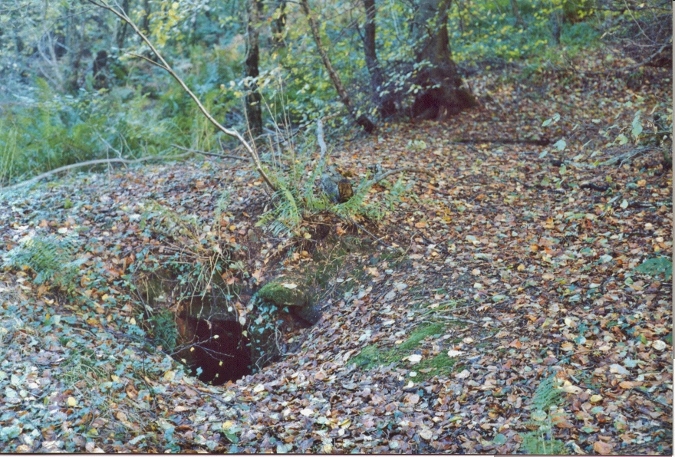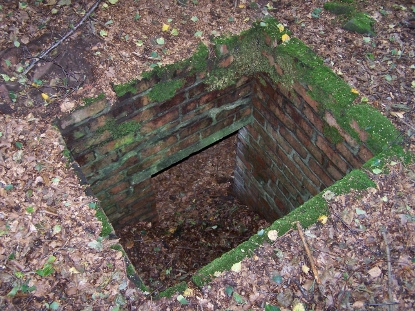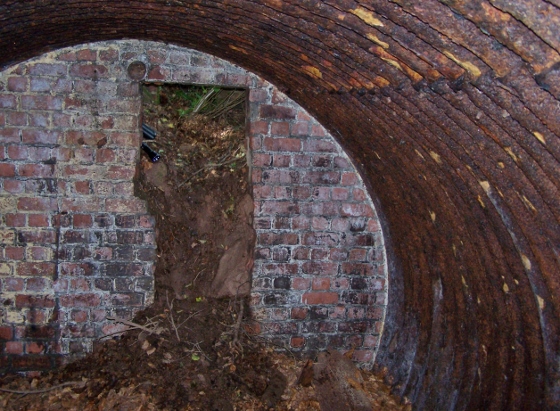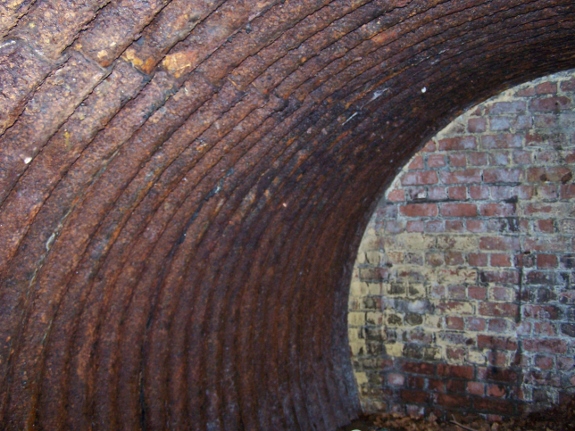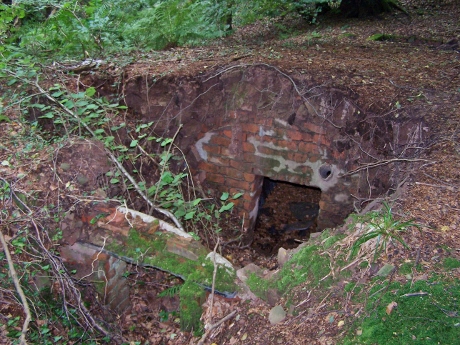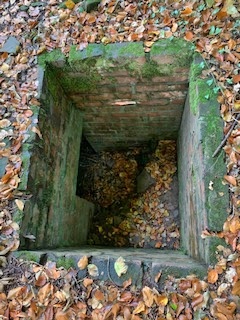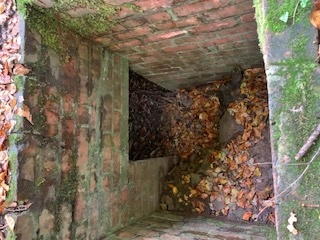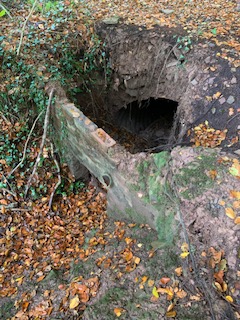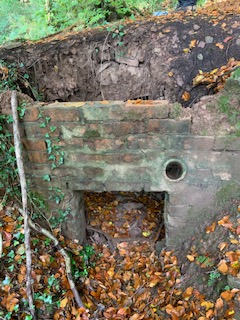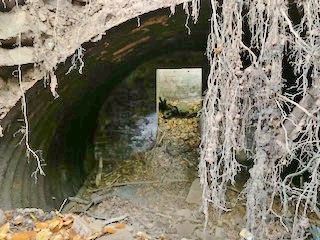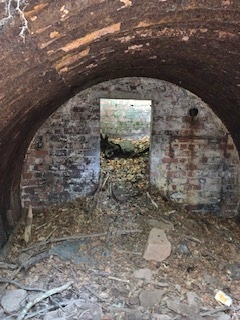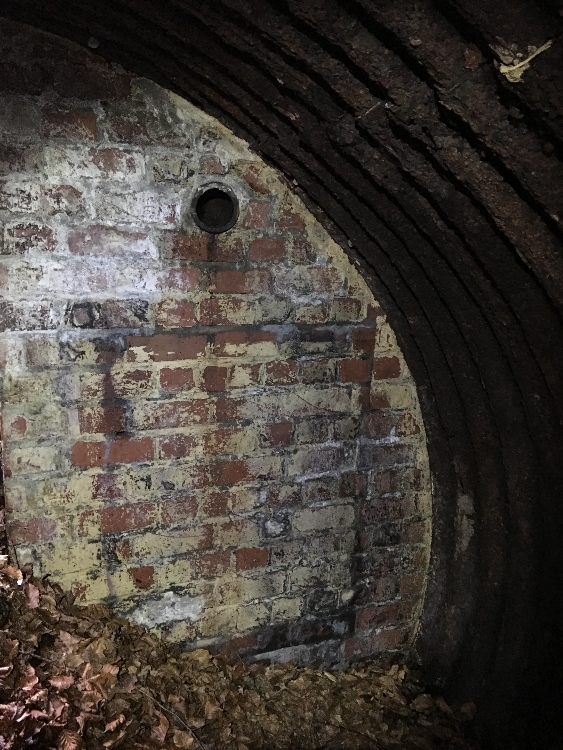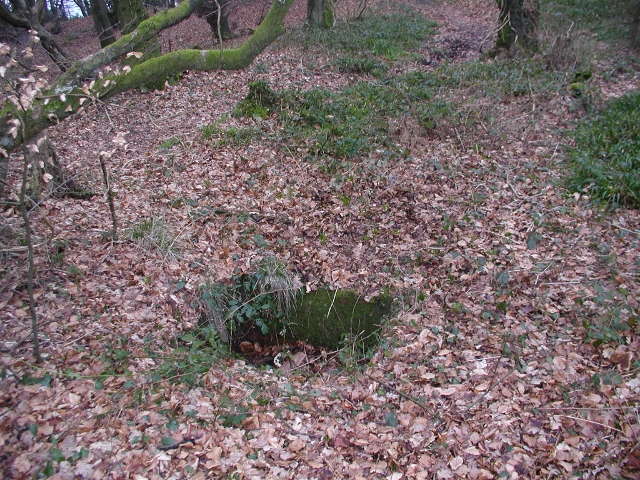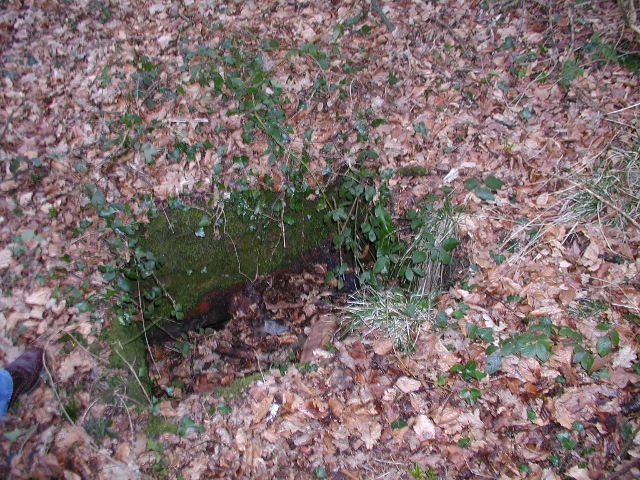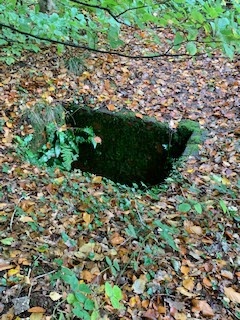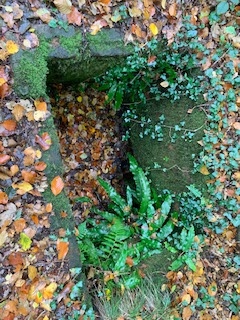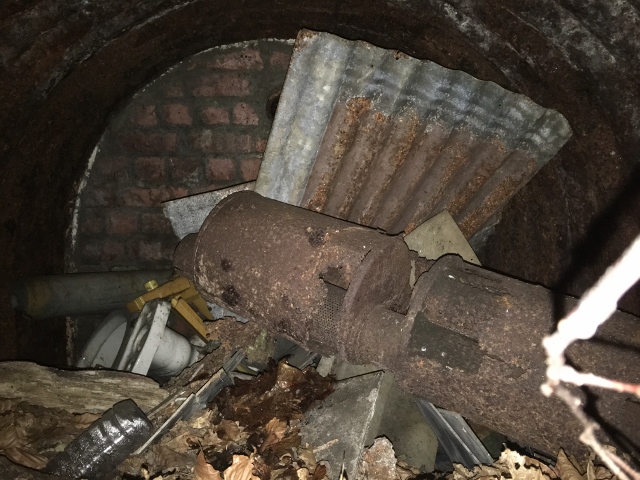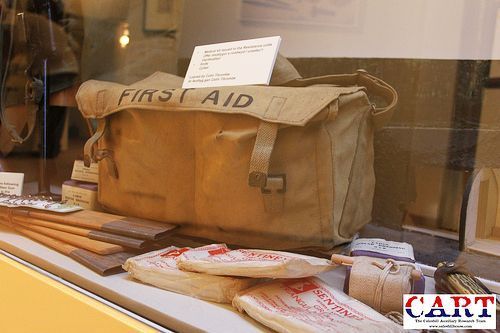Langstone is a smaller village and community East of the city of Newport.
| Name | Occupation | Posted from | Until |
|---|---|---|---|
| Sergeant Alan Edwards Hollingdale | Accountant |
Unknown | 03 Dec 1944 |
| Corporal Jack Clement Lancelot Rudd | Joiner and plumber |
Unknown | 03 Dec 1944 |
| Private Leslie Arthur Bulley | Made dye casts for ammunition |
Unknown | 03 Dec 1944 |
| Private Henry Charles Bulley | Made dye casts for ammunition |
Unknown | 03 Dec 1944 |
| Private Leonard Escott | Teacher |
Unknown | 03 Dec 1944 |
| Private David G. Hall | Railway wagon builder |
Unknown | Unknown |
| Private Harry Hando | Stockbroker |
Unknown | Unknown |
| Private Ralph Henry Jones | Farmer |
Unknown | 03 Dec 1944 |
| Private D. Jones | Unknown | Unknown | |
| Private Henry Charles Lawrence | Lorry driver |
Unknown | 01 Jan 1942 |
| Private Thomas J. Marsh | Unknown | Unknown | |
| Private Raymond Skinner | Butcher |
Unknown | 03 Dec 1944 |
| Private John Gwynne Thomas | Solicitors clerk |
11 Sep 1942 | 03 Dec 1944 |
Deep in Wentwood Forest on Coed Y Careau Common, Langstone lie the remains of the OB used by Langstone (Jonah) Patrol. The Royal Engineers helped to build the OB. The base lies off a wooded path, hidden underground and cleverly disguised by beech trees and vegetation. A clean water well is situated close by. From the brow of the hill, eleven counties and the Bristol Channel can be clearly seen. This is no doubt why this location was ideal.
The area was isolated and well known to the men from their Rover Scout activities. Situated about 40 metres north east from the main OB, there is a surviving ammunition and storage bunker.
The OB was sunken underground to about 4 metres and measured approximately 4 by 3 metres. Ingenious ventilation was installed inside the main chamber. A ventilation pipe to the right of the main entrance shaft connects to a hollowing in the trunk of a nearby tree. It can still just be seen today if you clear away the undergrowth. A hollow tree trunk was fixed above the secondary chamber ventilation pipe and utilised as a chimney. Although the updraft from the tree trunk was adequate, Alan Hollingdale – the Sergeant of Jonah Patrol, told of how cooking would have been restricted to just boiling water had they gone into active service.
The main chamber was fitted out with bunks for 6 men, a table, cooking stove, parafin lights and a chemical Elsan toilet. Stoves were provided to try and alleviate the condensation problem, but apparently they never worked. It was not known at this time that paraffin would exasperate the problem. The 60 foot escape tunnel which was constructed of corrugated iron and wood came out into a nearby disused quarry.
From the exterior, the OB was completely invisible. Each member of the Patrol had their own identification marble. This was rolled down a ventilation pipe to alert their comrades inside of their arrival.
A brick built entrance shaft was constructed with an iron ladder for easy access. This 6 foot deep shaft was covered by an ingenious wooden soil filled trough hinged at both ends. The hinged lid opened in the centre just enough for a man to get through and was planted with vegetation.
The Patrol would only venture to the OB in darkness, moving through thick undergrowth on their stomachs to avoid detection. Their greatest fear if there had been an invasion was the swift discovery of their OB by German sniffer dogs.
It was feared that ammunition stored in the main OB would become unstable due to damp. Jonah Patrol had 2 ammunition bunkers at Coed Y Careau. The location of the third bunker has still to be determined. Secret markers on trees were used by the Patrol to mark its position. The Forestry Commission unfortunately, cut down the marker trees just after stand down in 1944. Despite best efforts, the Patrol lost the location of the bunker. It lay undiscovered for over 30 years until some children fell through the rotten lid whilst playing. The Bomb Squad had to be called in to clear the weapons. Unfortunately, the MOD could not locate the record of this clearance so what was found there is uncertain. The secondary ammunition bunker remains intact and is located about 100 metres east from the main OB.
The remains of the Operational Base and ammunition bunker are now protected by Cadw. They are scheduled ancient monuments – category B structures of national historic importance.
The OB featured on an episode of BBC Hidden Wales available until Oct 2021. 18.30 minutes in.
Langstone Patrol
The Germans would have targeted Caerwent for the ammunitions held at the RNPF cordite factory. The Severn Tunnel would have also been a prime target as it links Wales to England. No doubt, the Patrol would have destroyed the tunnel in an attempt to disrupt enemy advances.
Early meetings took place in the Rover Scout hut in the six week period before the completion of the OB at Coed Y Careau. Other meetings were occasionally held in Alan Hollingdale’s workshop. Most meetings took place on Tuesday and Friday evenings and Sunday mornings. Here, the training programme would be discussed along with overviews of previous sessions. Other information from group officers would also be disseminated and discussed.
Group training courses with target practice were arranged every 4-5 weeks at the derelict Glen Court mansion, Llantrisant near Usk. The derelict Glen Court House in Llantrisant where Jonah Patrol did most of their secret training has now been completely restored. It is now occupied as a family home.
Locally, Jonah Patrol used Wentwood Forest for training exercises along with Pertholey House near Newbridge on Usk and Belmont House near Langstone.
An annual training camp with members from other Patrols was held at Southerndown. The men were billeted at Dunraven Castle which was also home to evacuees during the war.
Each member trained at Coleshill House HQ near Swindon at least once. Other training sessions were held every 3-4 months by regulars from Porthcawl. Les Bulley told of an exercise that was conducted at Ogmore Castle, which was given the scenario of being an occupied German petrol dump. The men of Jonah Patrol crawled through the undergrowth into the grounds of the castle. Unseen by the regular forces stationed there, they laid a series of thunder flashes, each with a 30 minute time delay. The men watched in amusement from a nearby hillside as each device exploded one after the other. The regular Army stationed there, were ignorant as to who had set the devices and were no doubt somewhat horrified!
A copper hot water tank supplied for training purposes by Les Vick of Moses Patrol, was packed with explosive and detonated in the hills over Llantrisant. The explosion could be heard for miles and shards of hot metal rained down all around the men. Fortunately, nobody was hurt, but it was the talk of the locals in the Greyhound pub. Most thought it was an enemy device exploding; of course members of the Patrol enjoying a quiet half pint had to let them think that!
Jonah Patrol apparently got much amusement from irritating and annoying the regular troops. Les Bulley told of a meeting held in Captain Bucknell’s office. Bucknell had asked the Royal Engineers to make a rocking horse for his son for Christmas. The horse was large and wooden and had pride of place in his office. When he left the room, Len Escott (Jonah Patrol) rolled up some balls of soil and put them under the horse’s tail! Bucknell was furious when he saw it and demanded to know who had done it, Les Bulley apparently replied that “it was the horse !”
Len Escott told his son Peter about a particular course of training on explosives and detonators. The Patrol were due to be inspected by 2 rather debonair and immaculate officers of the Coldstream Guards. In the entrance to the ruins someone had left a bucket of manure. The Sergeant stepped forward to remove the offensive item from his officer’s path. Sadly for both, the bucket was attached to the ground by a pull switch detonator – with lamentable consequences!!
Alan Hollingdale arranged a training exercise which involved crawling unseen though the woods at Coed Y Careau in thick fog. Eventually, the Patrol got somewhat careless thinking they were totally invisible - until that is, they emerged unexpectantly into brilliant sunlight at Glen Usk House!
No special uniforms were worn, but standard Home Guard uniforms and denim overalls were issued to protect clothing.
Rubber boots alongside HM leather issue boots were preferred as they were waterproof and made little noise. In some cases dark knitted balaclavas were also rumoured to be issued. Drivers in the Auxiliary Units were issued with fuel coupons and papers in case they were questioned by local police and military for suspicious behaviour. These papers explained that they were acting in an authorised military capacity and would not answer questions.
There were food rations for 7 men for approximately 2 weeks. A gallon of rum was also issued with a label warning that it was for use only in dire emergency. Each Patrol was issued with a medical kit which included items such as amputation knives, bandages, splints, antiseptic creams, ligatures and in some cases - morphine. Jonah Patrol, did indeed, have a supply of morphine in their kit. The instructions given on its administration are as follows:
• If a man was badly injured but expected to live, he could be administered with a quarter of a grain of morphine.
• If he was potentially fatally injured, he could be administered with a half a grain and it would not affect any recovery he may make.
• If the man was most definitely not expected to live, a whole grain could be administered
This would no doubt hasten death. The medical kit issued to Jonah Patrol is still in existence. It was donated by Vera Lawrence (wife of Charles Lawrence – Jonah Patrol) to Colin Titcombe a local historian.
Jonah Patrol was issued with a deadly array of weapons including the newly available plastic explosive (PE) and the dreaded sticky bomb.
The following weapons are recorded as being issued to Jonah Patrol. Each man was issued with :
1 Colt.38 6 chamber revolver
1 Commando fighting knife
1 Knuckle duster
The Patrol as a whole were issued with:
1 Thompson Sub-Machine Gun .45 with 10 magazines
2 Lee Enfield Rifles .300 Calibre
1 Remington .22 Rifle complete with silencer and telescopic sights
2 Sten Machine Carbines MK 3 with 10 magazines
100lbs of explosives
150 grenades
150 phosphorous bottles will all the ancillary equipment to initiate demolition explosive, booby traps etc.
Colin Baker Jones who is the eldest son of Ralph Jones recalls that his father hid a roll of cortex in an over stairs cupboard. Everyone in the house was forbidden to open the cupboard. Curiosity however, got the better of Colin and he defied his father’s instruction. Unaware of what the Cortex was he strung a length of it between 2 cow stalls in their barn. He very unwisely decided to light it and the result was a large bang and a singed face! Lucky for Colin his father never found out about his defiant folly.
After the war, it was generally acknowledged that Jonah Patrol was the most highly trained and deadly of all the Monmouthshire Auxiliary Units.
Les Bulley told of the march that Jonah Patrol developed. The left arm would swing in time with the left leg rather than vice versa! They perfected this march through determined practice, much to the annoyance of regular army officers who ordered them to stop it !
A message that 'the balloon had gone up' (code for the invasion had started) somehow reached the Patrol and they immediately mustered at their Operational Base. They stayed there for two days stealing eggs and the odd chicken from nearby farms. One of the men eventually casually asked a farmer where the Germans were located. He was very surprised to be told with some confusion that there had been no such invasion.
As the threat of invasion seemed less likely, the requirement for the Auxiliary Units passed. In November 1944 they were ordered to stand down. In May 1944 Jonah Patrol was despatched to the Isle of Wight to allow regular forces to help out in France for the D Day landings.
David Escott recalls that his father told him and his brother Peter that he was unable to tell them where he had been in May 1944. He however, gave each of them a pencil with a glass tube on it containing the coloured sands from Alum Bay, IOW. David recalls:
“He also gave me a clockwork model of a Polish destroyer and Peter got a model liner. Later he told me us that his group had found a toyshop on the Island which had been closed up since the onset of war, tracked down the owner, and persuaded him to open it up for them – hence our presents, toys which were unobtainable at that stage of the War”
Here is a transcript of a note as it was written by Len Escott about his journey to the Isle of Wight in May 1944:
“At D-Day we were ordered to report to our Area HQ (which happened to at Bulmer’s Cider Works outside Hereford!) at 4.30 on a Sunday morning. This was compulsory. Any employers, e.g. my own, who quibbled about our release, were ordered to release us. Actually, we went up to Bulmer’s the night before and had a very liquid time.
At 4.30 next morning, we were loaded into Army lorries and set off. First stop, Newbury in Berkshire, where a meal was laid on. Second stop, a low dive in Pompey, kept by a one-legged ex sailor, for another meal. Then across on the ferry to be lorried to a huge tented camp on the outskirts of Newport. However, we only stayed there one night. That morning, our lieutenant (B H Lyon- the ex-Gloucester and England cricketer - virtually the owner of Rediffusion) was called to the HQ. He found this to be full of brass-hats and sticklers for regulations. This did not go down at all well with him as he was quite unorthodox, but had the most persuasive tongue. How he managed it, I don’t know, but next day we were whisked off to a lovely old country house, at the end of a long drive at Freshwater, where we spent the rest of our time. I couldn’t locate this house now, but the lounge had a most unusual feature – a window over the fireplace, so that you could stand before the fire and look out over the Solent at the colossal convoys on their way to Normandy. Actually, the lanes, copses and woods for many miles before we got to Portsmouth were packed with guns, armour and transport of all sorts. I have never seen anything to equal it.
While at Freshwater, we had a constant rota of patrols, day and night – beach patrols, cliff patrols, and patrols inland, with a system of signals to call on re-enforcements, if needed. It was quite hectic and we had very little rest. To hear all the accents, from the north of Scotland to Dorset, from Wales to Norfolk, was quite an experience.
When our period of duty was up, we were relieved by others from Auxiliary Units. We gathered, at the time, that the island had been virtually stripped of troops to send to Normandy, but intelligence got wind of a mass of German paratroops across the water, and it was suspected that they might be dropped to the island, in order to disrupt the sailing of convoys and cause trouble. So they called in our thugs from all over Britain to replace the Regulars".
The only recognition the Auxiliaries ever received was a stand down letter signed by Colonel F W R Douglas who was the Commander of the Auxiliary Units. Supplies were taken back into stores after the war. Jonah Patrol however managed to siphon off the rum using a crude veterinary syringe without breaking the seal. The gallon of ‘rum’ subsequently went back into stores after the war as cold tea!!
Les Bulley had a hidden supply of phosphorous bombs buried in sand in the cellar of his house at 14 Annesley Road, Newport. On VE night, the bonfire for the street party was damp and refused to ignite. Les went to his cellar and without being seen tucked one of the bombs into the bonfire as a propellant. The result was a horrific stream of melting tarmac which of course accelerated when hosed with water. Eventually, the fire brigade extinguished the flames with foam. Nobody ever knew where the bomb had come from and who was responsible for the large hole in the road! Subsequently, he removed the detonators and in the dead of night, tipped the remainder of his secret stash over Newport Bridge. They remain there to this day!
Peter Escott, son of Len Escott also recalls that his childhood bonfire night parties were somewhat more explosive than others!
Alan Hollingdale formed the Monmouth Auxiliers Association and the inaugural meeting was held in the Greyhound Public House, Llantrisant. There were 69 members at the first meeting. By 1993 only 8 remained.
A memorial plaque has been erected by the Hollingdale family at Llanhennoc. It is to commemorate their Father Alan and the rest of Jonah Patrol. It is located on a trig point pillar specifically adopted by the Hollingdale family and is in sight of the Coed Y Careau bunker Operational Base: www.staybehinds.com/memorial/tredunnock-near-llanhennock
TNA ref WO199/3389
Sallie Mogford
1939 Register
Hancock data held at B.R.A
BBC Hidden Wales Series 2 Episode 5
